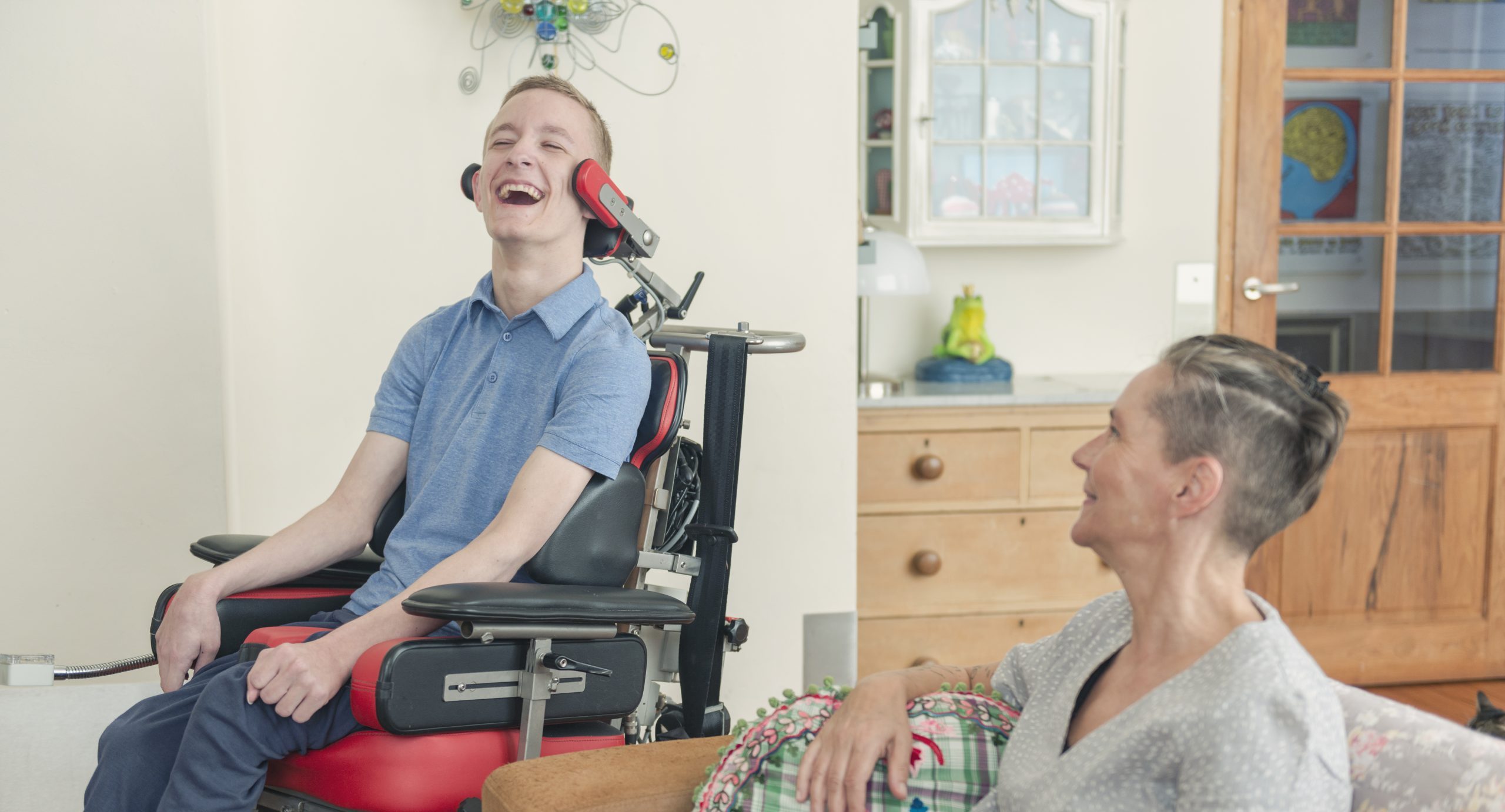Each year in the U.S., roughly 5,000 people are diagnosed with ALS, or Lou Gehrig’s disease. A diagnosis of this progressive neuromuscular disease raises many questions and concerns, such as determining the best type of care. Whether you or your loved one has been diagnosed with ALS, it’s important to understand your options.
For those who require or choose to receive care, there are typically three different paths – relying on a spouse or family member to provide in-home care, going to a nursing home or assisted living facility, or utilizing an agency to provide professional in-home care. While the ‘right’ choice for each individual is based on a variety of factors, many patients and their families experience more comfort and less stress with professional, in-home care. With this level of care, you can:
1. Stay in the comfort of your own home.
With in-home care, you have one less transition or change to worry about. It’s less disruptive to your existing family and household life, and familiar sights and sounds provide a level of comfort you can’t replicate elsewhere.
“We see repeatedly that patients not only present with better clinical outcomes, but also report more overall life satisfaction when allowed to live, and receive care, at home,” says Kellie Lanier, Senior Vice President and Chief Nursing Officer. “The values of family participation and support, in partnership with highly skilled caregiving, cannot be underestimated when considering the social and emotional needs of the ALS patient.”
You can anticipate feeling more like yourself when you’re in your home compared to a nursing facility. This was certainly true for Andy Miller. Andy was diagnosed with ALS in 2014 and has been receiving in-home, professional care through Maxim Healthcare Services since 2019. Thanks to in-home care, Andy was able to continue working as an aviation engineer for several years from the comfort of his own home. Even as his ALS progressed, he was able to adapt and utilize his in-home office to continue working.
2. Avoid additional stress on your family.
When a family member assumes the role of primary caregiver for someone with ALS, there can be significant relational and financial strain on the family, stress on the caregiver, and a risk of caregiver burnout. When understanding the constant – and sometimes complex – nature of ALS care, none of this is surprising. Serving as a full-time caregiver to a loved one who requires 24/7 care can be mentally, physically, and emotionally exhausting.
Often, a spouse or family member is expending so much time and energy tending to their loved one’s physical care needs that they have little energy left to provide nurturing loving care, and even less energy to meet their own needs. Even part-time in-home nursing care, called respite care, can provide much-needed breaks for spouses and family members.
For Andy Miller’s wife, Jackie, getting in-home care through a qualified nurse was a huge ‘sigh of relief.’ Even beyond the daily tasks Andy’s nurse completes, she also coordinates with Andy’s various doctors. “She knows what to look for with Andy’s health and communicates that with his clinical team of different specialists,” says Jackie. “Without her, we would be on our own to do that.”
3. Get skilled, professional care.
When you choose professional, in-home care, you can rest assured knowing you are in good hands. A lot of second-guessing, calls to the doctor, and stress can be avoided with the addition of a qualified, in-home nurse. While your family members may know you well, if they don’t have any type of medical background or training, they are limited in how they can best support you. “[My nurse’s] confidence in her skills made me more confident and comfortable,” says Andy. “There were two hospital visits in which I did not want to go in, and she insisted we did. They both turned out to be necessary for immediate medical help.”
Jackie confirms, “If she hadn’t known what to look for, we might not have gone in. Overall, she is our voice of expertise and if she sees something that is ‘off’ she knows what to do first.” Having another set of hands and eyes around the house has been incredibly helpful for Jackie, who still works full-time. “She provides a level of skilled nursing to effectively evaluate Andy and also helps with more basic tasks, like ensuring he gets regular showers,” Jackie says.
4. Choose the level of care that is right for you.
In-home care isn’t one-size-fits-all. Your clinical team and home healthcare agency can help you choose the level of care this is best for you and your family. And you aren’t locked into a certain type of care long-term. “Right now, our nurse is in our home 24 hours each week,” says Jackie. “That’s the right amount for our current needs and Andy’s stage of ALS right now.”
As your needs change, you can scale up or scale back the amount and level of care. It’s important to know your options (i.e. skilled vs. unskilled care, short-term or long-term care, etc.) and ask questions to learn more about the services available to you. At Maxim Healthcare, we’re here to answer your questions and match you with the best caregiver for your unique situation.
Interested in in-home care for ALS?
Financial help is available through commercial insurance, along with both state and federal insurance plans. Talk to your doctor about the level of care that is best for you and contact us to learn more about your financial options.
*All patient information is used with permission.



